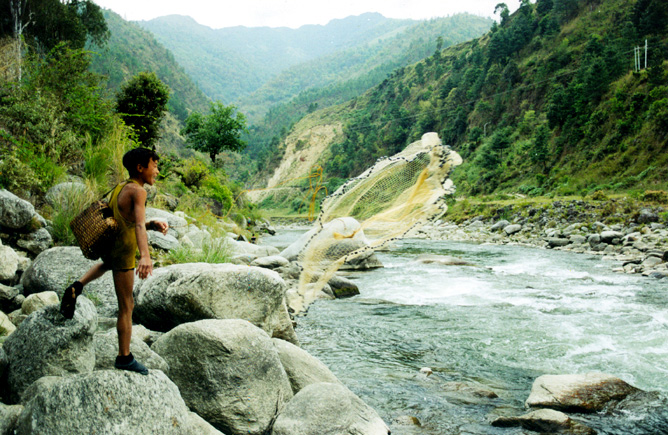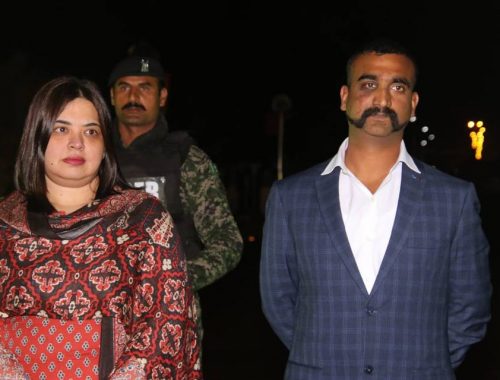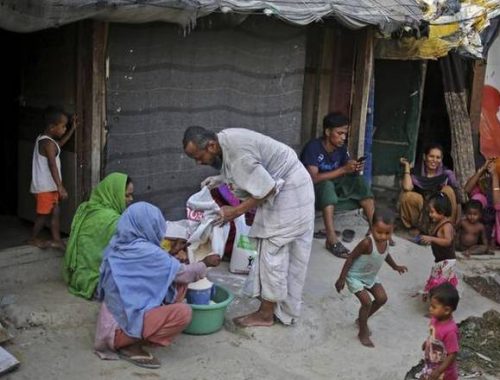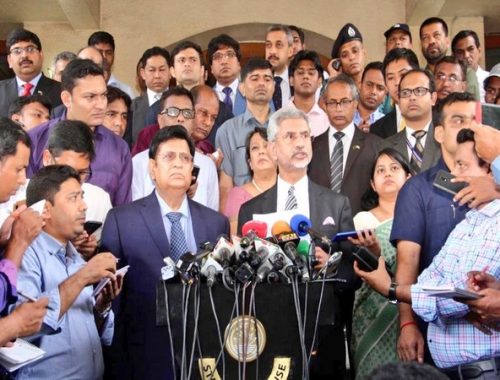To evolve a consolidated strategy for management of its north-east region’ water resources, India will shortly set up a North East Water Management Authority (NEWMA), according to government officials. The authority is being set up on the recommendations of a high level committee headed by NITI Aayog vice-chairman Rajiv Kumar, in the backdrop of China’s ambitious $62 billion south-north water diversion scheme.
NEWMA will be the apex authority for developing all projects related to hydropower, agriculture, bio-diversity conservation, flood control, inland water transport, forestry, fishery and eco-tourism in the region. It will also help spearhead India’s efforts to establish prior user rights on waters from the rivers that originate in China.
The committee was set up in October 2017 with the aim of helping India’s flood-ravaged north-east. Its mandate was to facilitate optimising benefits of appropriate water management and NITI Aayog, the federal policy think tank headed the efforts. This assumes significance as India has been pushing to establish prior user rights on rivers that originate in China in an effort to fast-track projects in the northeast. Also, Japan has joined hands with India to aggressively develop infrastructure projects in the region with an India-Japan Coordination Forum for Development of North East been set up.
“The committee’s report has been finalised and its is on that basis that a structured approach is being considered. The main purpose is to take care of power generation, irrigation, flood control, soil erosion among all other measures,” said a senior Indian government official requesting anonymity.
“The report has been submitted some months back. We are going ahead with constituting the NEWMA. The vice chairman of Niti Aayog chaired this. Niti Aayog has been at the forefront of this,” said a second Indian government official who also did not want to be named.
With one of the focus areas being hydropower, the strategy will also help establish first-user rights to the waters of the Brahmaputra. The total hydropower generation potential of India’s North-Eastern states, and Bhutan, is about 58,000MW. Of this Arunachal Pradesh alone accounts for 50,328MW, the highest in India.
Queries emailed to NITI Aayog vice-chairman Kumar and a Niti Aayog spokesperson on Thursday morning wasn’t immediately answered.
To have all states on board to work in tandem for implementing a concerted strategy, the chief secretaries of all the eight states of the region were included in the committee. The committee also comprises secretaries from the ministries of development of north-eastern region (DoNER), power, water resources, river development and Ganga rejuvenation, National Disaster Management Authority, departments of border management and space.
Developing hydropower projects has been a recurring theme of India’s strategic play in the border areas, specifically with China and Pakistan in mind. A case in point being the 330 MW Kishanganga hydro power project in Jammu and Kashmir that was commissioned last May on the river Kishanganga, a tributary of Jhelum. While Pakistan had challenged the project under the Indus Waters Treaty of 1960, the International Court of Arbitration at The Hague ruled in India’s favour in 2013.
India is now also looking at expediting strategically important hydropower projects in Jammu and Kashmir to fully utilize its share of water under the Indus Waters Treaty. State run NHPC Ltd plans to construct these hydropower projects in the context of China developing the controversial China-Pakistan Economic Corridor (CPEC).
The committee’s terms of reference against the backdrop of floods that have brought life to a standstill in Assam, Arunachal Pradesh and Manipur also included identification of gaps in the existing mechanisms and arrangements for water resource management, and suggesting policy interventions.
Mint reported on 30 August that 103 private hydropower projects in Arunachal Pradesh with a total capacity of 35 gigawatts (GW) still to take off despite the government’s Act East policy. This comes against the backdrop of growing concerns on the delay in India’s plans to generate power from rivers originating from neighbouring China. A delay in building hydropower projects on rivers originating in China will affect India’s strategy of establishing its prior-use claim over the waters, according to international law.
China on its part is going ahead on its south-north water diversion scheme of the rivers that feed downstream into the Brahmaputra, known in China as the Yarlung Tsangpo. Of the 2,880km of the Brahmaputra’s length, 1,625km is in Tibet, 918km in India, and 337km in Bangladesh. Of the eight river basins in Arunachal Pradesh, Subansiri, Lohit and Siang are of strategic importance, as they are closer to the border with China.




